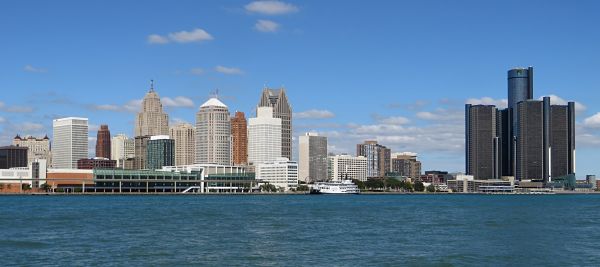
Detroit Recovery Project: Engine for a New Future
The Detroit Recovery Project has been providing much-needed rev for nearly two decades. Now it’s poised to be the engine that drives a new future.
Think about it. With ever increasing launches of such great good initiatives as Hazelden’s Recovery Equity (which we enthusiastically covered earlier), and more and more organizations taking careful consideration of Equity, Diversity and Inclusivity, few nonprofits seem better-situated to lead the new normal than the Detroit Recovery Project (DRP). After all, the Motor City’s go-to recovery source has basically been holding the equity line since 2002.
Yep, that was the year when the Bureau of Substance Abuse Prevention, Treatment & Recovery gave a $100,000 grant to the Partnership for a Drug Free Detroit in order to fund a special Community Needs Assessment Report. That report was entitled the Detroit Recovery Project. And it comprehensively provided essential details of just what Detroiters needed in the way of substance abuse and mental health services. In fact, DRP actually helped provide some of those services. And the combination of reportage and servicing was so impressive that the Substance Abuse and Mental Health Administration (SAMSHA) stepped up with $1.2 million in federal funding so that DRP could become a bona fide Recovery Community Support Program (RCSP). DRP has been holding the equity line ever since.
Oh, equity isn’t all that’s concerned the DRP. Heck, back then equity was barely even part of the conversation. It certainly wasn’t DRP’s priority. No, they were in it to help Detroiters. Simple as that. Red, yellow, black, white or brown wasn’t even a consideration.
Nor should it have to be. Then or now. And in Detroit, it largely doesn’t have to be. Unfortunately, Detroit isn’t representative of America-at-large. And most definitely not representative of the part of America that still insists on color coordination.

Eastside, Westside and All Around the Town
Eastside, Westside and all around the town, DRP has its namesake city covered. That’s right. Detroit Recovery Project has long boasted facilities on both sides of The D. Their Eastside Health & Wellness Recovery Resource Center is on East McNichols Road, smack in the center of a recovery pocket that includes the Greater Detroit Area outpost of the National Council on Alcoholism and Drug Dependence (NCADD-GDA). DRP’s Westside Center is on historic West Grand Boulevard, which Detroiters call simply “The Boulevard.” To further strengthen its capabilities however, DRP also recently added the Bray Recovery Home for Men over in Highland Park. The transitional housing unit makes a worthy addition to DRP’s treatment-centered twins.
Certified Community Behavioral Health Clinics
Those twin centers are Certified Community Behavioral Health Clinics (CBHC). That is, they’re a nationally-recognized model of effective, non-discriminatory treatment. A model, by the way, the National Council for Behavioral Health says “alleviates decades-old challenges that have led to a crisis in providing access to mental health and addiction care.”
And “as an integrated and sustainably-financed model for care delivery,” these CCBHCs:
- Ensure access to integrated, evidence-based addiction and mental health services, including 24/7 crisis response and medication-assisted treatment (MAT) for addiction.
- Meet stringent criteria regarding timeliness of access, quality reporting, staffing and coordination with social services, criminal justice and education systems.
- Receive funding to support the real costs of expanding services to fully meet the need for care in their communities.
“CCBHCs have dramatically increased access to mental health and substance use disorder treatment,” runs the National Council’s overview. They’ve also “expanded states’ capacity to address the overdose crisis and established innovative partnerships with law enforcement, schools and hospitals to improve care, reduce recidivism and prevent hospital readmissions.”
The Detroit Recovery Project is right there doing just that. Providing state-of-the-art Physical Health Services, Mental Health Services, Medication-Assisted Treatment, and Peer Coaching. In fact, they’ve been right there doing just that since even before such certification was available.
How’s that for perfectly-situated?
Detroit Recovery Project: Back to its Future
Things are different now of course. After two decades, how could they not be? In many ways the differences are brighter and shinier. Harbingers of an illuminating world of tomorrows. Then again, there are still some dim spots. Too many dim spots. And it’ll take some practiced spotlighting to get rid of them.
That’s what make Detroit Recovery Project so perfectly poised. They’ve been at it since dim spots were pretty much the best thing going. Now that a force field of much-needed light has been shed on recovery, it only makes sense to turn back to them for the future. After all, it’s a future that DRP has done very much to help create.
No, it’s not 2002 anymore. And a whole lot has changed. The City of Detroit Bureau of Substance Prevention, Treatment and Recovery has morphed into other agencies. As did the Partnership for a Drug-Free Detroit. Nevertheless, the Detroit Recovery Project continues to stand, ever ready, willing and eager to achieve its mission.
It’s a mission that hasn’t wavered in nearly 20 years. And one that undoubtedly won’t waver for at least another 20 years. If anything, it’ll strengthen. And continue on its road of accomplishments. Especially now that more and the more of the world is supporting and aligning with their mission.